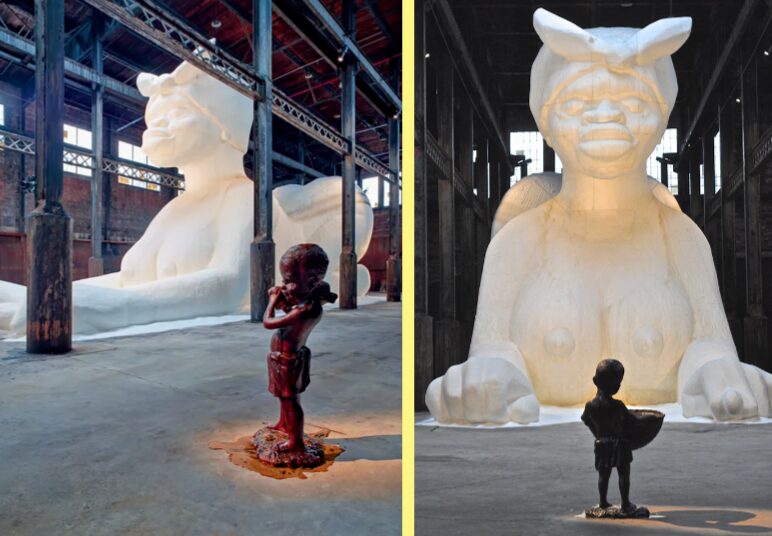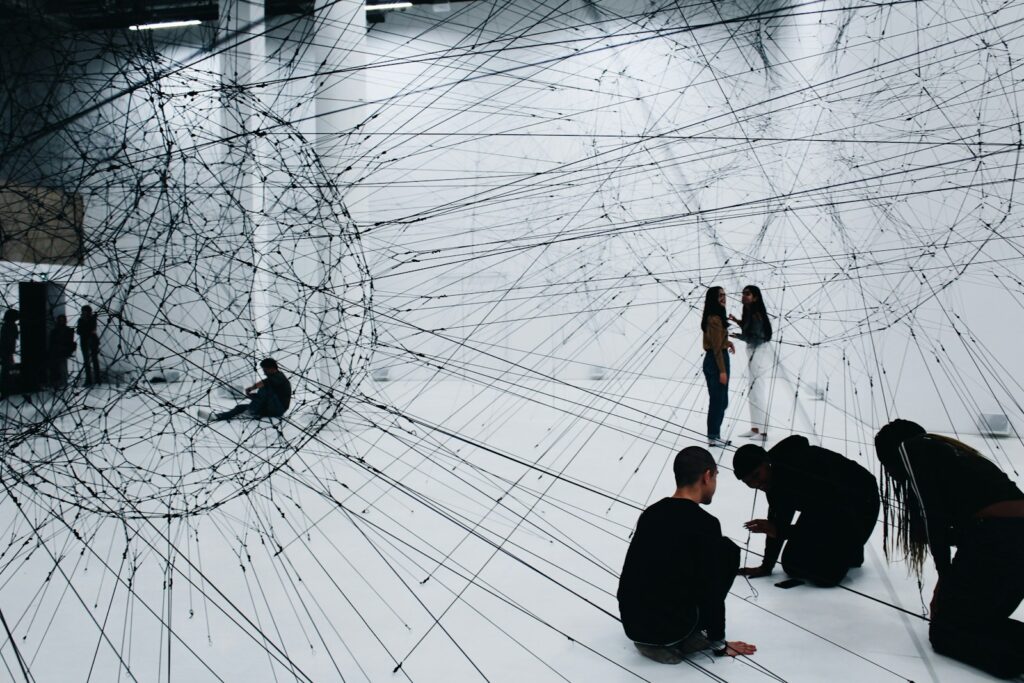What is Installation Art?
The idea of creating immersive, viewer oriented ‘environments,’ is often a focus of installation
art.
Installation art:
- Can utilize ready-made or constructed materials.
- Can be specific to a certain space or time.
- Can often occupy an entire room or gallery space that the spectator has to walk through, or are so fragile that they can only be viewed from a doorway, or one end of a room.
- What makes installation art different from sculpture is that it is a complete unified experience, rather than a display of separate, individual artworks.
We all die, so this kind of big happy, smiling, minimal, colourful, confident facade that medicine and drug companies put up is not flawless – your body lets you down, but people want to believe in some kind of immortality. – Damien Hirst
Damien Hirst’s installation Pharmacy, 1992 exemplifies this idea of how environments can shape and influence our ideas and trigger emotional responses.
Damien Hirst Pharmacy (1992)Tate © Damien Hirst and Science Ltd.
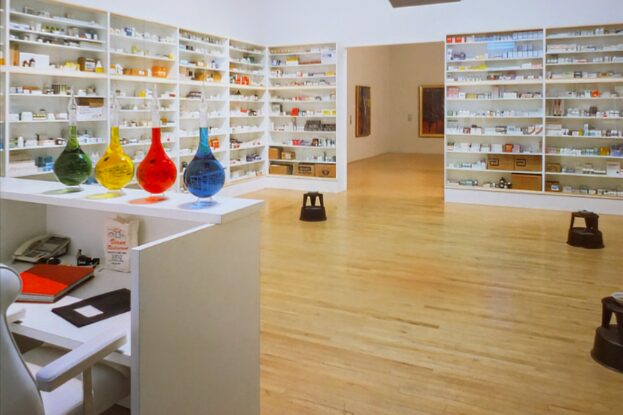
Best known for sculptures made from both found and cast objects, Canadian artist Liz Magor is interested in the culture of production and consumption, how we assign value to things, and the usage and function of objects. When we move, our material environments are thrown into disarray even when moving to a new place can be something of a joy—an uncomfortable, insecure, even painful process can occur.
The work One Bedroom Apartment has been shown in numerous exhibitions throughout Canada, the United States, and Europe. For each installation, the entire contents of a typical one-bedroom apartment are brought together (furniture, small items, linens, knick-knacks, and packing materials) sourced primarily through a combination of renting and borrowing. Each installation is influenced by where it is installed. The only constant object in each iteration is a simplified resin sculpture of a dog, curled under a table.
Liz Magor, One Bedroom Apartment, 1996, polyester resin, contents of a one-bedroom apartment, dimensions variable. Installation view.
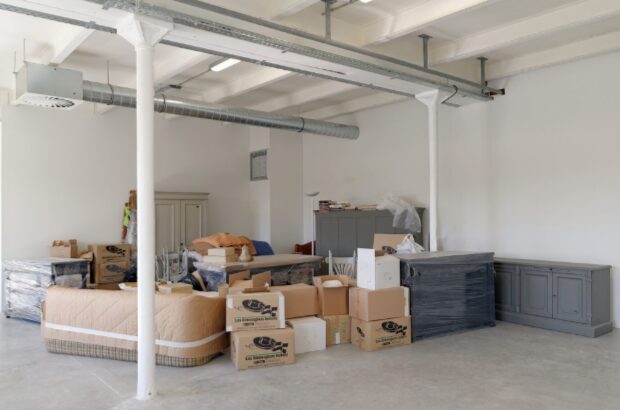
Filmmaker and artist Kutluğ Ataman spent more than two years getting to know Küba’s inhabitants. Küba is a community of men, women, and children who live in one of the most notorious ghettos in Istanbul, a shantytown slum that started as a hideout for left-wing militants and other outsiders. The installation artwork Kuba sits between documentary and fiction. It uses storytelling to explore the issues of identity and belonging. The participants’ stories are presented on old television sets as part of a 40-person audio-visual installation.
Kutlug Ataman, Küba: Journey Against the Current, 2004, installation view.
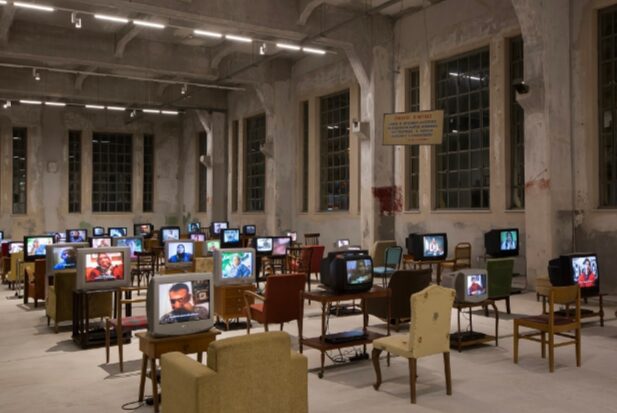
Exhibited in the former Domino Sugar Refinery warehouse, is thirty-five-foot-high, sphinxlike sugar baby, (A Subtlety, 2014) it was African American artist Kara Walker’s first large-scale public project. The artist’s crouching, giant mammy, made from forty gleaming tons of bleach- white sugar molded onto foam blocks; her rump in the air, gigantic genitalia exposed, she functioned as a frank monument to the mix of sexual and commodity fetishization that has long characterized Western society’s relationship to the black body. The dark skinned worker boys with their baskets in the high-ceilinged industrial space, have frozen smiles that are like specimens in some strange Barnum and Bailey haunted house.
Kara Walker, A Subtlety, 2014 installation view.
